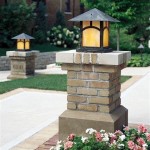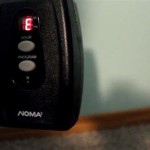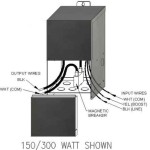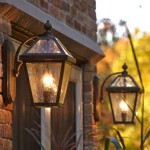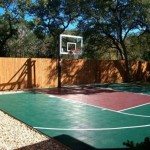What Material Is Used For Outdoor Furniture Covers?
Outdoor furniture covers are essential for protecting valuable patio sets, grills, and other outdoor items from the harsh elements. The longevity and effectiveness of these covers depend significantly on the materials from which they are constructed. Selecting the right material is crucial for optimal protection against rain, sun, wind, snow, and debris. The market offers a variety of materials, each with its own set of properties, advantages, and disadvantages. Understanding these differences is paramount for making an informed purchasing decision.
The goal of an outdoor furniture cover is to shield the furniture from environmental damage. Exposure to sunlight can cause fading and cracking of materials like plastics and certain fabrics. Rain and snow can lead to rust, mildew, and rot. Wind can carry dirt and debris, scratching and dulling the surfaces of furniture. Furthermore, covers also protect against animal droppings and sap from trees. The selection of material determines how effectively the cover performs these protective functions and how long the cover itself will last.
Key Considerations for Outdoor Furniture Cover Materials
Several factors influence the suitability of a material for outdoor furniture covers. These include water resistance, breathability, UV resistance, durability, and ease of maintenance. A material that excels in all areas will provide the best protection and longevity. However, trade-offs often exist, and the ideal material will depend on the specific climate and environmental conditions in which the furniture will be stored.
Water resistance is crucial for preventing rain and snow from penetrating the cover and damaging the furniture. A completely waterproof material, however, can trap moisture inside, leading to condensation and mildew growth. Therefore, breathability is also important, allowing moisture to escape while preventing water from entering. UV resistance prevents the material from fading, cracking, or becoming brittle under prolonged exposure to sunlight. Durability determines how well the material can withstand tearing, abrasion, and other forms of wear and tear. Finally, ease of maintenance, such as cleaning and storage, affects the overall user experience.
Common Materials Used in Outdoor Furniture Covers
Several materials are commonly used in the manufacturing of outdoor furniture covers. These include polyester, vinyl, polyethylene, and various coated fabrics. Each material offers a different balance of properties, making them suitable for different applications and budgets.
Polyester: Polyester is a synthetic fabric widely used in outdoor furniture covers due to its affordability, durability, and water resistance. Polyester covers are generally treated with a water-repellent coating to enhance their ability to shed water. While not completely waterproof, polyester offers good protection against light rain and moisture. It is also relatively resistant to UV damage, though prolonged exposure can still cause fading over time. Polyester covers are lightweight and easy to handle, making them convenient for everyday use. However, polyester is not as breathable as some other materials, which can lead to condensation buildup in humid environments.
Polyester's strength and resistance to stretching make it a good choice for covers that need to withstand moderate winds. It is also relatively easy to clean, typically requiring only a mild soap and water solution. Polyester covers are available in a wide range of sizes and styles, making it easy to find a suitable cover for most types of outdoor furniture.
Vinyl: Vinyl is a completely waterproof and highly durable material commonly used in outdoor furniture covers. Vinyl covers provide excellent protection against rain, snow, and other forms of moisture. However, vinyl is not breathable, which means that condensation can easily build up inside the cover, potentially leading to mildew and mold growth on the furniture. To mitigate this issue, some vinyl covers include vents to improve air circulation.
Vinyl is also relatively resistant to UV damage, though it can become brittle and crack over time, especially in extreme temperatures. Vinyl covers are generally heavier and more rigid than polyester covers, making them more difficult to handle and store. They are also more prone to tearing if snagged or punctured. Vinyl covers are often used for covering grills and other equipment that require maximum protection from the elements. The non-porous nature of vinyl also makes it easy to clean; spills and dirt can be easily wiped away.
Polyethylene: Polyethylene is a lightweight and inexpensive plastic material often used in disposable or temporary outdoor furniture covers. Polyethylene covers are waterproof but not breathable, similar to vinyl covers. They offer basic protection against rain and snow but are not particularly durable and are prone to tearing. Polyethylene is also highly susceptible to UV damage, which can cause it to degrade and become brittle quickly. Polyethylene covers are typically used for short-term storage or protection during construction or painting projects. They are not recommended for long-term use in outdoor environments.
Despite their limitations, polyethylene covers are a cost-effective option for protecting furniture from dust and debris during short periods of inactivity. They are also lightweight and easy to fold, making them convenient for storage. However, their lack of durability and UV resistance make them unsuitable for situations requiring long-term protection.
Coated Fabrics: Coated fabrics combine the best qualities of various materials to create a durable and protective outdoor furniture cover. These fabrics typically consist of a base material, such as polyester or canvas, coated with a waterproof and UV-resistant layer, such as polyurethane (PU) or polyvinyl chloride (PVC). The coating provides excellent protection against rain, snow, and sunlight, while the base material adds strength and durability.
Coated fabrics offer a good balance of water resistance and breathability, allowing moisture to escape while preventing water from entering. The breathability is often enhanced by the use of vents or specially designed coatings that allow for moisture vapor transmission. These fabrics are also highly resistant to tearing and abrasion, making them suitable for use in windy conditions. Coated fabric covers are generally more expensive than polyester or vinyl covers but offer superior performance and longevity.
The choice of coating material affects the properties of the cover. PU coatings are generally more flexible and breathable than PVC coatings, while PVC coatings offer better waterproofing and durability. The base material also plays a role in the overall performance of the cover. Canvas, for example, is a strong and durable natural fiber that provides excellent tear resistance. Polyester offers good UV resistance and is less prone to shrinkage than canvas.
Solution-Dyed Acrylic: Solution-dyed acrylic fabrics, like Sunbrella, are premium options for outdoor furniture covers. These fabrics are incredibly durable and highly resistant to fading from sunlight because the color is integrated into the fiber itself during manufacturing, rather than being dyed onto the surface. This process gives them superior colorfastness compared to other fabrics. Solution-dyed acrylic is also water-repellent, breathable, and resistant to mold and mildew.
While offering exceptional performance, solution-dyed acrylic covers are typically more expensive than other options. However, their long lifespan and superior protection can make them a worthwhile investment for those seeking the best possible protection for their outdoor furniture. They are often used for high-end outdoor furniture sets and are a popular choice for those living in areas with intense sunlight or frequent rainfall.
Additional Features to Consider
In addition to the material itself, several other features can enhance the performance and convenience of outdoor furniture covers. These include vents, straps, buckles, and drawstrings.
Vents: Vents are openings in the cover that allow air to circulate, preventing condensation buildup and reducing the risk of mildew and mold growth. Vents are particularly important for covers made from waterproof but non-breathable materials, such as vinyl and polyethylene. They should be strategically placed to maximize airflow without compromising water resistance.
Straps and Buckles: Straps and buckles are used to secure the cover to the furniture, preventing it from being blown away by the wind. They are typically made from durable webbing and feature adjustable buckles for a snug fit. Straps and buckles are especially important for covering lightweight furniture or furniture located in windy areas.
Drawstrings: Drawstrings are used to cinch the cover around the base of the furniture, providing a secure and custom fit. They are often used in conjunction with straps and buckles to provide maximum protection against wind and rain. Drawstrings should be made from durable materials that can withstand repeated tightening and loosening.
The presence and quality of these features can significantly impact the overall performance and usability of the cover. Covers with well-designed vents, durable straps and buckles, and secure drawstrings will provide better protection and last longer than covers lacking these features.
Choosing the Right Material for Your Needs
Selecting the right material for an outdoor furniture cover requires careful consideration of several factors, including the local climate, the type of furniture being covered, and the budget. In areas with heavy rainfall or snowfall, waterproof materials like vinyl or coated fabrics are recommended. In areas with intense sunlight, UV-resistant materials like solution-dyed acrylic or coated fabrics with UV inhibitors are essential. In areas with high humidity, breathable materials with vents are crucial for preventing mildew and mold growth.
The type of furniture being covered also influences the choice of material. Large, bulky furniture requires durable and tear-resistant materials, while smaller, lightweight furniture can be covered with lighter materials. The budget is also an important consideration. Premium materials like solution-dyed acrylic offer superior performance but come at a higher price. More affordable materials like polyester and polyethylene offer basic protection but may not last as long.
Ultimately, the best material for an outdoor furniture cover is the one that provides the optimal balance of protection, durability, and affordability for the specific needs and circumstances. Researching different materials, reading reviews, and comparing prices can help make an informed decision that will protect valuable outdoor furniture for years to come.

Tips For Using Your Outdoor Furniture Cover The Blog

How To Prevent Pooling Water On Patio Furniture Covers The Cover Blog

Tips For Using Your Outdoor Furniture Cover The Blog

Full Weather All Furniture Covers

Best Fabric For Outdoor Furniture And Cushions

The Best Outdoor Furniture Covers To Keep Your Patio Protected

Best Patio Cover Materials Creative Covers Inc

Outdoor Furniture Covers All Sizes

Eight Best Outdoor Furniture Covers For Winter Bbc Gardeners World

4 Reasons Why You Should Cover Your Patio Furniture Sunnydaze Decor
Related Posts


